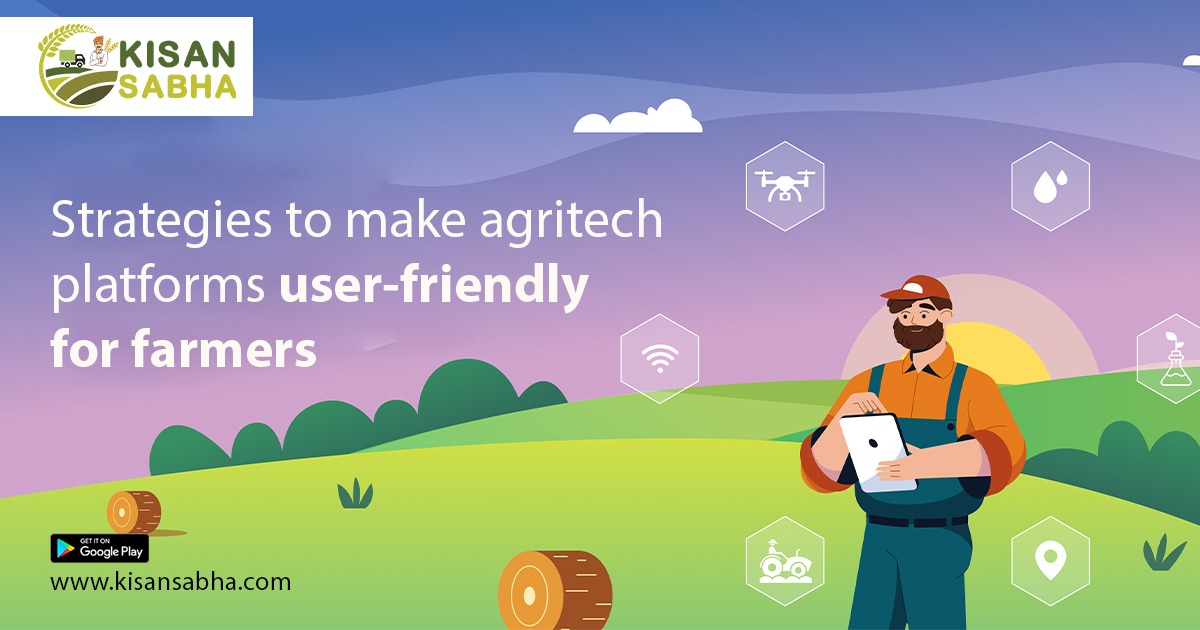In India, the agricultural environment is the main source of income. Most of its rural residents—nearly 70%—rely on agriculture for their primary subsistence. But even after roughly 75 years of independence, our farmers continue to face a number of difficulties, including the lack of capital inputs and access to high-quality seeds, expensive fertilizers, manures, unpredictable weather, adequate irrigation systems, adequate mechanization, soil erosion, and sound marketing infrastructure.
The good news is that, like in every other industry, technological development in agriculture has made it possible for farmers and other stakeholders to address current issues as well as new ones. Farmers in India now have the opportunity to combine arduous labor with clever strategies thanks to the emergence of agritech platforms, which are revolutionizing the country’s agricultural ecology. But farmers still need a lot of time to catch up with these cutting-edge technologies. This naturally raises the question of how current agritech platforms might bring farmer-focused services to support modern farming.
In light of this, here are four important ways agritech platforms may be made more user-friendly for farmers.

1. Farmer-friendly apps for mobile devices
Unquestionably, cell phones are one of the most straightforward but clever methods for agritech platforms to link farmers with cutting-edge technology. These platforms give farmers (sellers) and consumers the ability to conduct transactions without the use of a middleman by utilizing mobile applications. This ensures complete transparency and gives farmers the opportunity to get the true value of their harvests without a middleman taking a substantial cut as fee. To further guarantee that the entire transaction is safe, many applications also offer a secure payment channel.
2. Striking affordability for everyone
Given that many farmers in India are from rural areas, finding affordable access to the greatest resources is a huge problem for them. At this point, developing agritech platforms are crucial for their growth. Agritech platforms may aid farmers in increasing crop productivity by offering low-cost agricultural inputs including seeds, fertilizers, and herbicides. Similar to how they offer economical or on-rent agricultural tools like sickles and cultivators, these platforms may help eliminate manual labor and boost productivity.
3. Simple informational strategies
The main barrier to communication between farmers and agritech platforms, who are the main players in the agricultural ecosystem, is accessibility. Even though agritech platforms incorporate cutting-edge technology, farmers cannot use these features. Agritech platforms should thus propose simple approaches to help farmers comprehend the significance and benefits of smart agricultural technology in order to fill this need gap. These platforms may increase farmers’ participation and successfully address the issues that arise in day-to-day farming by providing them with the necessary knowledge about agricultural technology and practices.
4. Making use of social media to increase engagement
Social media, the quickest, most accessible, and most rapid method of digital communication, might be crucial for agritech platforms looking to interact with farmers. Agritech platforms may develop a one-stop location for niche agricultural communities to acquire trustworthy recommendations from industry experts by utilizing the interactive social media interface. This will be similar to their immediate social circle but more trustworthy, modernized, and knowledgeable about contemporary agritech.
In conclusion
Indian agritech companies are growing at a 25% annual rate. For the 90 to 150 million Indian farmers to remain viable, profitable, and growing, these enterprises are essential. However, it would be challenging for farmers and agritech to flourish together until agritech platforms start prioritizing user-friendly ways instead of only innovation.
As a result, it is suggested that agritech platforms pay attention to the aforementioned advice and construct more farmer-focused platforms that function from the bottom up to guarantee the comprehensive growth of the agricultural sector.




